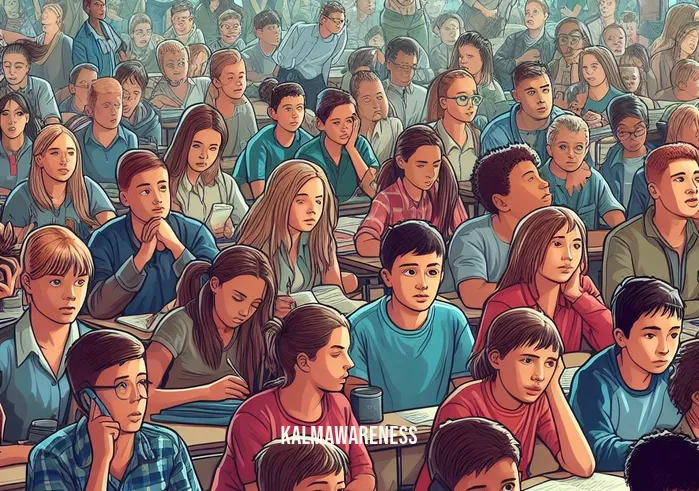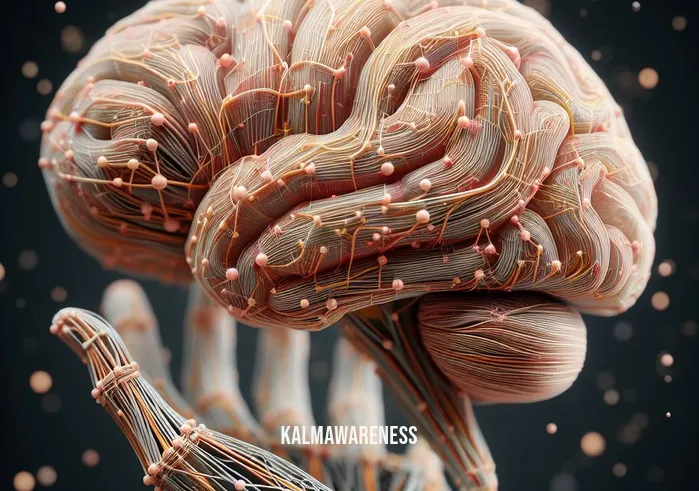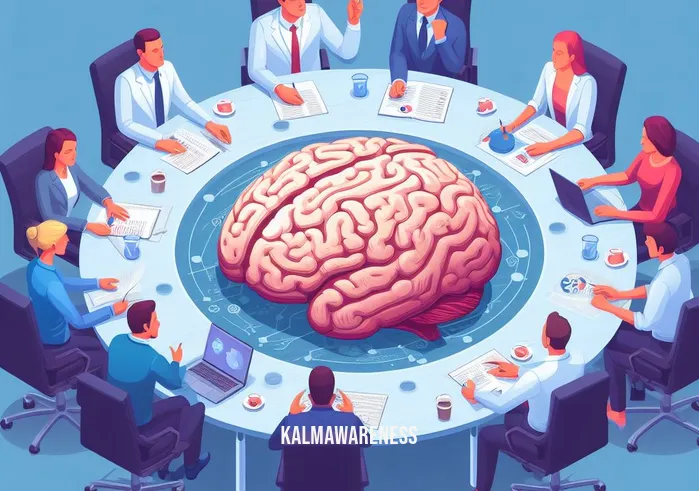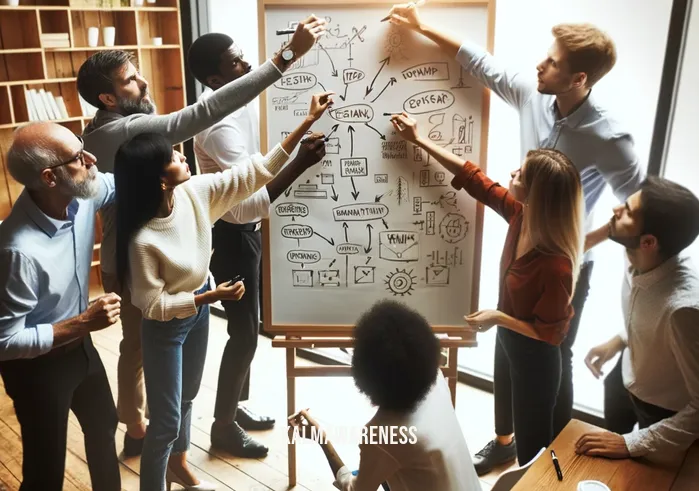The Intricate Dance of the Hand and Brain: A Comprehensive Overview
In the intricate web of our anatomy, every part functions in harmony with the others, under the leadership of our brain. Among the numerous relationships that our brain forms with different parts of our body, one of the most profound is the hand brain model explained. But why is this relationship so crucial? The link between our hands and brain not only aids in physical tasks but extends far beyond, diving deep into our emotional, cognitive, and spiritual realms. In this article, we shall explore this entwined relationship and its significance in our overall well-being, both mental and physical.
Neurology Basics: The Brain-Hand Relationship
Our hands are the primary tools with which we interact with our environment. From the moment we wake up and follow our 7-second morning ritual to the last action we perform at night, our hands are our loyal partners. But what many may not realize is the significant role the brain plays in these actions. Whether we’re mindfully involved in mindful movement meditation or unconsciously scratching our nose, our brain is constantly receiving and sending signals to our hands.
The Mind-Body Connection
When we say “mind-body connection,” we often think of meditation or yoga. But mindful solutions online extend the bridge between our mental and physical realms. The synchronization between our hands and brain is a prime example. The hand brain model explained here is a testament to how our simple human heart and our intricate brain work seamlessly, making us capable of expressing, learning, and understanding through touch.
Anatomy Awareness: Understanding Our Tools
An essential step in enhancing our mind-body connection is to gain awareness of our anatomy. While it might seem elementary, do you truly know how to touch that body part with a comprehensive understanding? The more we know about our body parts, the better equipped we are in using them effectively, further strengthening our relationship with the brain.
Learning Categories and Capacity
Ever wondered if there’s a limit to how much you can learn in a day? Or how mistakes grow your brain? Our hands play a pivotal role in this learning process. From writing to crafting, our hands aid in transferring knowledge to the brain, and vice versa. Delving into the way of mindful education, we begin to see the integral role of hands in different learning categories.
Health and Well-being: A Hand-Brain Collaboration
Our health and well-being are, in many ways, a result of our actions. But actions aren’t merely physical movements; they’re also reflections of our mental state. By indulging in practices such as 6-step meditation or by knowing the gist of memory occurrences in the brain, we pave the way for a healthier, happier life. Both our hands and our brain play a pivotal role in this journey, marking their importance in our holistic well-being.
In this journey of understanding, we’ve touched the surface of the profound relationship between our hands and brain. Their relationship is like a dance, a harmonious ballet of actions and reactions that define our daily lives. In the next chapter, we’ll delve deeper into each of these areas, from the neurological pathways that connect our hands and brain to the myriad ways this connection impacts our daily lives, learning, and health. Continue reading as we further explore and provide insights to enhance your understanding, and by extension, your life.

A Comprehensive Analysis of the Hand-Brain Model
The human body is a marvel of nature, operating in symphony to accomplish the multitude of tasks it undergoes daily. The hand-brain model explained in Chapter 1 touched upon the symbiotic relationship that our hands and brain share. As we journey further, we’ll provide a more in-depth exploration of this intricate connection, combining factual data with illustrative examples to elucidate the topic.
The Neurological Wiring Behind the Model
Our understanding of the hand-brain connection has progressed leaps and bounds thanks to advanced imaging techniques and brainwave stimulation. This connection isn’t mere biology but an orchestra of synchronized actions and reactions:
- Touch and Feel: The instant we touch a body part, neurons fire signals to the brain, enabling us to identify texture, temperature, and pressure.
- Motor Skills: Activities requiring precision, like threading a needle or playing the piano, underscore the brain’s command over hand movements.
- Emotional Expression: The hands often mirror our emotional state, be it through a clenched fist in anger or a reassuring pat on the back.
How Learning and Adaptability Play Their Role
The hand-brain relationship isn’t static; it evolves. Through our experiences and intentional practices, like switching on our brain through a 5-step learning process, we can nurture and refine this connection. Consider:
- Muscle Memory: Athletes and artists can attest to how repeated actions become second nature, all thanks to the brain encoding these patterns.
- Adaptability: Our brain’s plasticity, aided by consistent practices like reading about new topics, allows it to forge new pathways, helping hands to adapt to different tasks or even compensate for injuries.
The Hand-Brain Model: At A Glance
To appreciate the complexity of the hand-brain connection, let’s break down some essential components in a structured table:
| Function | Brain Region Involved | Impact on Hand Movement |
|---|---|---|
| Touch Perception | Somatosensory Cortex | Recognizing textures, shapes, and objects. |
| Motor Skills | Primary Motor Cortex | Directing precise hand and finger movements. |
| Emotional Expression | Amygdala & Pre-frontal Cortex | Mirroring emotional states through gestures. |
| Learning & Memory | Hippocampus | Storing routines and refining hand skills. |
| Adaptive Response | Cerebellum | Coordinating and refining hand movements in new or altered scenarios. |
The Interplay’s Influence on Well-being
Our hands aren’t just tools; they’re an extension of our emotional and mental well-being. Activities like coloring to understand parts of speech or delving into kindness through visual stories emphasize the hands’ role in our cognitive and emotional health. They’re not just about achieving a task but also about the process, the experience, and the emotions they evoke.
Moreover, the hand-brain connection plays a pivotal role in mindfulness practices. As we learn to be happy now through mindfulness, we realize that our hands can be a medium to anchor our attention, bringing us back to the present moment and enhancing our overall well-being.
Understanding the intricacies of the hand-brain model offers more than biological insight—it’s a testament to our body’s wonder. With every touch, gesture, and action, we’re reminded of the seamless interplay between our brain and hands, a relationship that influences our learning, emotions, and well-being.
As we anticipate the journey ahead, the next chapter promises a deeper dive into real-world applications of the hand-brain model, emphasizing its significance in our daily lives and the potential it holds for personal growth. Continue reading to unlock these fascinating revelations.

From Understanding to Inspiration: Revelations of the Hand-Brain Model
In our exploration of the hand-brain model, we’ve analyzed its intricacies and implications. But like any scientific discovery, its real value unfolds when it touches human lives, inspiring hope, and encouraging change. In this chapter, we delve into heartwarming stories and motivational quotes that showcase the profound impact of understanding the hand-brain relationship.
Real-life Miracles: Stories of Hope
Anna’s Journey with Music: Born with a congenital hand deformity, Anna faced challenges in daily tasks, let alone playing a musical instrument. Yet, with sheer determination and leveraging her brain’s adaptability, Anna learned to play the piano. Today, her renditions of classic pieces are a testament to the power of the hand-brain connection. Through mindful movement meditation, Anna has synchronized her mind and fingers, making music that resonates with souls.
Michael’s Second Chance: After a car accident left Michael with reduced hand mobility, he believed his days of sketching were over. However, introduced to the concept of the hand-brain model and inspired by methods like the 7-second morning ritual, Michael embarked on a rehabilitation journey. Today, his artwork, rich with emotion and precision, showcases the harmony between hands and brain.
Words that Inspire: Reflecting on the Hand-Brain Connection
“The hands are the instruments of man’s intelligence.” – Maria Montessori. This quote beautifully underscores the essential relationship between our hands and cognitive abilities. By harnessing mindful solutions online, we can further appreciate and nurture this bond.
“It is the brain that sees, not the eyes. It’s the brain that moves the hand, not the muscles.” – Anonymous. This sentiment resonates with the idea of the 5-step learning process where conscious effort eventually becomes intuitive, thanks to our brain’s wiring.
“In every hand lies the power of creation, steered by the visions of the brain.” – James Clear. The connection between vision and execution, between ideation and creation, is epitomized by the hand-brain synergy. Warstler Elementary’s initiatives in encouraging crafts further this philosophy, highlighting the potential every hand holds.
Embracing the Model: Potential for Growth
Knowledge is empowering, but it’s the application that transforms lives. Gist memory occurs when the brain connects a series of actions to derive meaning. This implies that by understanding and embracing the hand-brain model, we can not only refine our skills but also carve new paths, discover hidden talents, and redefine limitations.
Furthermore, it’s essential to remember that while the hands execute, the heart fuels passion, and the brain navigates the journey. This holistic approach towards learning and growth, inspired by resources like the way of mindful education, can lead to a more enriched and fulfilling life.
The human spirit, when coupled with an understanding of the hand-brain model, can scale unimaginable heights. As we have witnessed, the revelations of this model are not limited to science labs; they flourish in our daily lives, igniting hope and inspiring action.
Our journey does not end here. In the next chapter, we’ll delve into practical tips and methods to harness the power of the hand-brain model. How can you, as an individual, maximize this connection for personal growth and well-being? Continue reading to uncover actionable insights.

Navigating the Complexities: Unraveling the Hand-Brain Model
The hand-brain model, as intricate as it is fascinating, offers a myriad of insights into human physiology and psychology. While previous discussions illuminated its profound impact on individuals and society, this chapter aims to break down its core concepts. By using detailed lists and bullet points, we’ll simplify the complex nuances, allowing for a more profound understanding.
Key Components of the Hand-Brain Relationship
Sensory Pathways: These are the conduits that transmit information between the hands and the brain. They play a pivotal role in tactile recognition and reflex actions.
Primary Somatosensory Cortex: The primary region in the brain responsible for processing sensory information from the hands.
Nerve Endings in Hands: Packed with a dense concentration of tactile receptors, these nerve endings play an indispensable role in touch sensitivity and dexterity.
Motor Pathways: These neural circuits help convert brain signals into hand movements. Essential for actions ranging from delicate tasks like threading a needle to more substantial tasks like lifting weights.
Primary Motor Cortex: Directs the movement of hands by dispatching signals through the spinal cord to hand muscles.
Basal Ganglia and Cerebellum: Both are critical in refining and coordinating hand movements.
Cognitive Interplay: This encompasses how our brain processes, interprets, and acts upon the sensory input it receives from the hands.
Prefrontal Cortex: Plays a significant role in planning complex hand actions.
Mirror Neurons: These specialized neurons fire both when performing an action and observing someone else execute the same action, playing a vital role in learning through imitation.
Practical Implications
Skill Acquisition: As explored in focus manuals, the hand-brain connection is crucial for mastering new skills, from playing an instrument to crafting.
Rehabilitation: Insights from the hand-brain model are pivotal in devising strategies for rehabilitation post-traumatic hand injuries or neurological disorders.
Holistic Wellness: Embracing practices like the 6-step meditation helps harness the power of the hand-brain connection for overall well-being.
Lesser-known Facts
Handedness and Brain: It’s a myth that left-handed individuals predominantly use their right brain hemisphere for tasks and vice versa. The relationship between handedness and brain lateralization is more complex than such binary distinctions.
Phantom Limb Sensations: Some amputees experience sensations, including pain, in the limb that’s no longer present. This phenomenon underscores the deep-rooted connection between the brain and the hand.
Touch and Emotion: As detailed in touch that body part, the tactile sensation isn’t just about physical touch. It’s deeply intertwined with our emotional processing.
Delving into the hand-brain model, it becomes clear that this connection isn’t just physiological; it’s the essence of human experience. From tactile recognition to emotional responses, our hands and brain are in constant dialogue, choreographing the myriad actions we perform daily.
The journey is nearing its end, but the revelations are far from over. In the concluding chapter, we’ll encapsulate everything we’ve uncovered, tying the intricate threads together and exploring how to leverage this knowledge for a brighter, healthier future. Stay with us as we weave the final tapestry of understanding.

The Symphony of Touch and Thought: Wrapping Up the Hand-Brain Model
From the delicate brush of a fingertip on a loved one’s cheek to the complex finger movements required to master a musical instrument, our hands, in constant dialogue with our brain, have narrated compelling stories. The “hand brain model explained” journey has taken us through winding roads of scientific discovery, physiological wonder, and practical applications. As we wind down this enlightening expedition, let’s revisit some of the highlights and pave the way for future explorations.
The Essence of the Hand-Brain Connection
Our odyssey began with an overview, guiding us through the neural highways that connect our hands to our brain. We delved deep into the science, appreciated the marvels of anatomy, and understood the paramount importance of the hand-brain model in activities ranging from mindful movement meditation to rigorous mindful solutions online.
The Ripple Effect
The hand-brain bond doesn’t stop at tactile sensations. It permeates our emotions, cognitive functions, and even social interactions. With insights from switch on your brain’s 5-step learning process, we realized that this relationship significantly impacts our capacity to learn, grow, and thrive.
A Source of Inspiration
Throughout history, the hand-brain dynamic has been a muse for artists, scientists, and philosophers alike. Real-life stories, quotes, and case studies shared a common thread – the awe-inspiring potential of our hands when in sync with our minds.
Simplifying the Complex
Beneath the surface, the hand-brain model is a layered tapestry of pathways, processes, and potential. Through bullet points, tables, and lists, we peeled back these layers, simplifying and showcasing the vast realm of possibilities and implications this model presents.
So, What Now?
The magic of understanding lies in its application. Whether you’re looking to deepen your coloring page parts of speech starter experience or enhance your simple human heart understanding, the hand-brain model holds the keys to countless doors of exploration. Remember, every touch is a conversation, a dance of neurons, translating sensations into emotions, thoughts, and actions.
A Hearty Thank You!
Your time, curiosity, and eagerness to understand have been the lifeblood of this exploration. The journey through the hand-brain model was rich, not because of the content alone, but because of readers like you, ever eager to learn and grow.
We invite you to delve deeper, to revisit previous chapters, or explore other intriguing topics on our platform. Be it the science of brainwave stimulation or the joys of mindfulness: be happy now, there’s a universe waiting to be explored.
Lastly, we promise more illuminating content in our upcoming editions. So, keep that spark of curiosity alive and remember: every touch, every gesture, and every thought is a testament to the miracle that is the hand-brain connection. Stay connected, stay curious!





